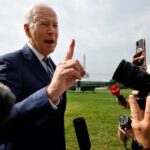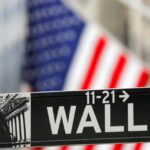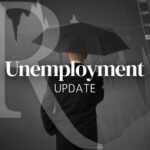By Emel Akan
News Analysis
The U.S. economy added a surprisingly strong 372,000 jobs in June. Many concluded that calls of a recession were greatly exaggerated after seeing the red-hot jobs report.
But despite the solid employment recovery, some observers are skeptical that the jobs market is as healthy as the government portrays.
The main concern is that the Federal Reserve may be too quick to judge that the labor market has healed enough to warrant an aggressive tightening in monetary policy, which could lead to severe job losses.
With many big and small businesses cutting their payrolls, the labor market is already showing signs of cooling. Job cuts announced by U.S.-based employers totaled 32,517 last month, up 57 percent from May, according to a report from global outplacement consultancy Challenger, Gray & Christmas, Inc.
Companies are reducing their workforces as inflation and recession fears intensify.
Kevin Hassett, former chairman of the Council of Economic Advisers under President Donald Trump, disputes the notion that because the job market is robust, there can’t possibly be a recession. Initial claims for unemployment insurance have surged in recent weeks, which is consistent with data from prior recessions, he told Fox Business.
The June jobs report shows that the private sector has recovered all the jobs that were lost during the pandemic recession, but the public sector is still down 664,000 from February 2020 levels (pdf). And a deeper dive into the payrolls data also reveals disparities and weaknesses in the recovery.
Labor Force Participation
Even as 2.7 million jobs were added in the first half of 2022 and the unemployment rate fell back to historically low levels, the labor force participation has remained depressed.
The labor force participation rate, which shows the share of the population that is working or looking for work, was 62.2 percent in June—the same as it was in January—and remains 1.2 percentage points below the pre-pandemic level of 63.4 percent.
This trend is concerning for the long-term health of the economy, according to E.J. Antoni, a research fellow at The Heritage Foundation.
The decline in labor force participation has been driven by several factors, including early retirement among baby boomers.
As a result, the current jobless rate gives “a very skewed perspective” of the true state of the labor market, Antoni said. If the U.S. economy had the same labor force participation trend that it did before to the pandemic, the unemployment rate would have been roughly 5 percent today, he predicted.
While 5 percent is not very high, he noted it is comparable to the levels seen in 2008. Hence, the U.S. jobs market may not be that much different from when it entered the Great Recession of 2008. That recession, which officially lasted from December 2007 to June 2009, pushed the jobless rate to a peak of 10 percent in October 2009.
“Our private sector has now have recovered all the jobs lost during the pandemic and added jobs on top of that,” President Joe Biden said in a speech on July 8, touting June’s employment report.
However, private sector employees now work almost half an hour less each week than they did in January 2021 when Biden took office.
A half-hour every week doesn’t seem like much, according to Antoni. However, considering the overall number of man-hours in a year and the number of people working in the private sector, it equates to a need to hire more people.
According to his calculation based on 130 million private sector employees, this equates to almost 2 million jobs.
“Even though you have more people working, the total amount of work being done is not actually any greater,” Antoni said.
Multiple Jobholders
In addition, the June jobs report reveals a widening gap between surveys of household and establishments (businesses), which alarms some economists.
President Ronald Reagan’s top economic adviser, Arthur Laffer, expressed concerns about June’s payroll data.
“We have very conflicting evidence with regard to the labor market,” he told Fox Business on July 15, citing disparities in survey results.
The government produces two estimates of employment growth each month, one based on a survey of businesses and the other on a survey of households. The establishment survey is the source of the monthly headline number cited in the Bureau of Labor Statistics report.
Since there are differences between these surveys, Antoni noted, they may produce contradictory findings within the same month, however, they tend to move in tandem over time. The establishment survey shows a 1.1 million jobs growth since March, but the household survey shows a loss of 347,000.
According to Antoni, while a direct comparison cannot be made due to variations in survey techniques, the gap in jobs growth between surveys is widening in the past four months, which is concerning.
Another interesting finding from the household survey is that the number of Americans working multiple jobs climbed by 239,000 in June. Since many Americans are unable to make ends meet, they must work several jobs and this is only captured by the household survey.
One implication of this is the possibility of double counting of employed people in the establishment survey, Antoni explained.
Since March, the number of people holding more than one job has increased by around 170,000.
Promising Signs
Despite these findings, some experts believe that June’s jobs report shows encouraging signals.
“I’m not too concerned about the increase in multiple jobholders,” Julia Pollak, chief economist at ZipRecruiter, told The Epoch Times.
“While it has gone up in recent months, it is still below pre-pandemic levels. And we saw a big drop in the number of people working part-time for economic reasons, which suggests that people are getting the hours they want and finding good full-time jobs,” she explained.
“The distribution of job gains in this report was also encouraging, with gains in many higher-wage industries, not just in low-wage leisure and hospitality. So many workers seem to be finding high-quality, full-time jobs.”
There have been growing fears of a recession in recent months, as economic indicators have begun to point to a slowdown. The stock market has been volatile, and bond yields have inverted, which is often seen as a harbinger of an impending recession.
The July jobs report, which will be released on Aug. 5, will be a key indicator of whether or not those fears are founded. If job growth slows significantly, it might be another indication that the economy is already in recession.






